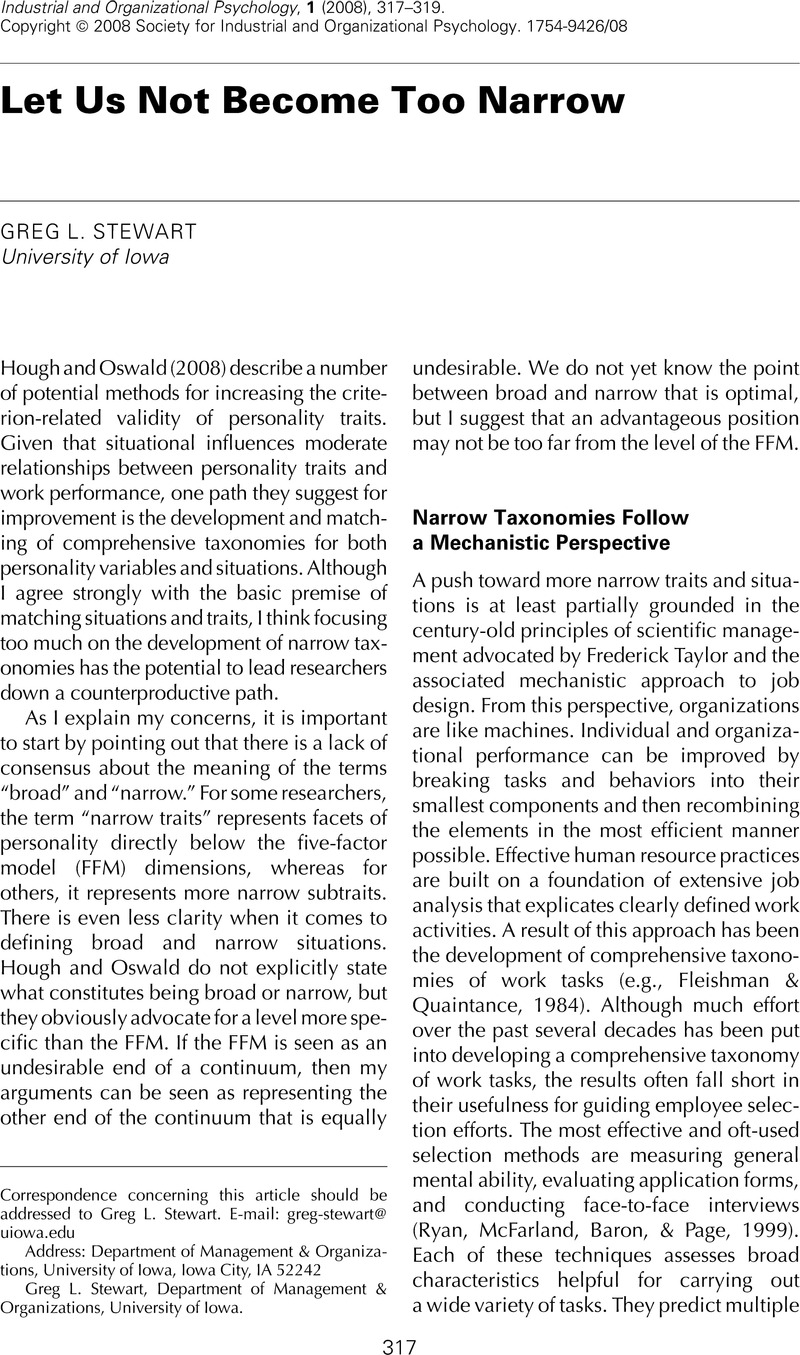Crossref Citations
This article has been cited by the following publications. This list is generated based on data provided by Crossref.
Oswald, Frederick L.
and
Hough, Leaetta M.
2008.
Personality Testing and Industrial–Organizational Psychology: A Productive Exchange and Some Future Directions.
Industrial and Organizational Psychology,
Vol. 1,
Issue. 3,
p.
323.
Kurtulmuş, Emre
Katrinli, Şeyma
and
Katrinli, Alev
2019.
The Influence of Personality Trait on Effective Leadership: The Role of Dopamine.
Dokuz Eylül Üniversitesi İşletme Fakültesi Dergisi,
Vol. 20,
Issue. 1,
p.
65.



